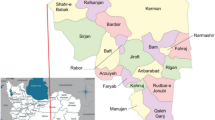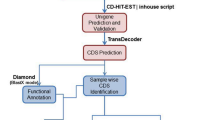Abstract
INFESTATION by insect pests of stored grains is one of the principal causes of food losses in developing countries1. Fumigation and treatment with conventional organic insecticides are handicapped by the problems of residual toxicity and the development of resistant strains of insects. Williams2,3 has pointed out that juvenile hormone or its chemical analogues could be used as insecticides free from such disadvantages. We have explored the possibility of using a chemical analogue of juvenile hormone—methyl 3,7,11-trimethyl-7,11-dichloro-2-dodecenoate4 (MTDD)—in controlling the multiplication of stored grain pests and the preliminary results are reported in this communication.
This is a preview of subscription content, access via your institution
Access options
Subscribe to this journal
Receive 51 print issues and online access
$199.00 per year
only $3.90 per issue
Buy this article
- Purchase on SpringerLink
- Instant access to full article PDF
Prices may be subject to local taxes which are calculated during checkout
Similar content being viewed by others
References
Parpia, H. A. B., Food Technol., 22, 62 (1968).
Williams, C. M., Nature, 178, 212 (1956).
Williams, C. M., Sci. Amer., 217, 13 (1967).
Romanuk, M., Slama, K., and Sorm, F., Proc. US Nat. Acad. Sci., 57, 349 (1967).
Author information
Authors and Affiliations
Rights and permissions
About this article
Cite this article
THOMAS, P., BHATNAGAR-THOMAS, P. Use of a Juvenile Hormone Analogue as Insecticide for Pests of Stored Grain. Nature 219, 949 (1968). https://doi.org/10.1038/219949a0
Received:
Issue date:
DOI: https://doi.org/10.1038/219949a0
This article is cited by
-
Effects of insect growth regulators with juvenile hormone activity againstCallosobruchus maculatus (F.) (Coleoptera: Bruchidae)
Anzeiger für Schädlingskunde Pflanzenschutz Umweltschutz (1992)
-
Induction of prolonged larval feeding stage by juvenile hormone analogues inTribolium Castaneum
Phytoparasitica (1976)
-
Synthetic Mimics of Insect Juvenile Hormone
Nature (1971)



